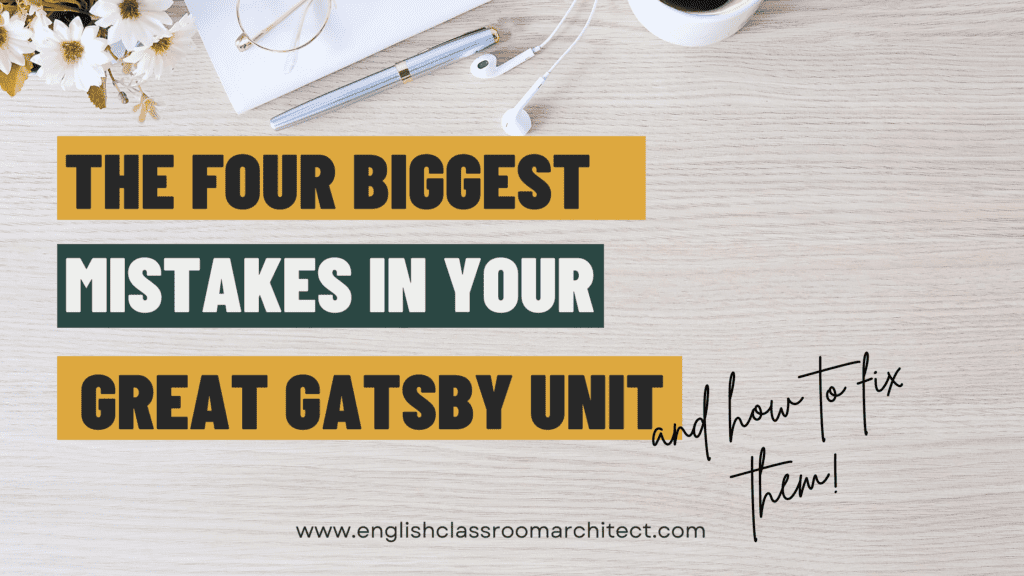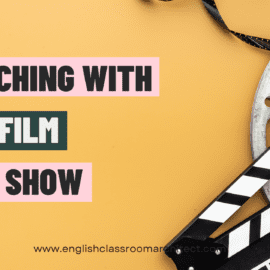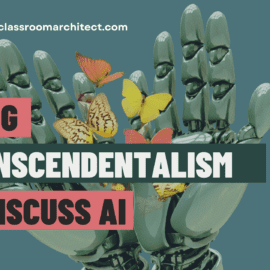When designing your Great Gatsby unit plan, it’s essential to approach it with care and strategic thinking. As educators, we have the power to shape our students’ understanding and appreciation of this iconic novel, but it’s important to be aware of the common mistakes that can hinder their learning experience. In this blog post, I will explore the three biggest mistakes often made in Great Gatsby unit plans and provide practical tweaks to overcome them, ultimately creating a more effective and engaging learning environment for our students.
Literary works like The Great Gatsby possess rich layers of themes, symbolism, and characterization that require thoughtful exploration. However, it’s easy to fall into common pitfalls that may inadvertently impede our students’ comprehension and critical thinking. By identifying and addressing these mistakes, we can ensure that our unit plans not only cover the necessary content but also foster a deeper understanding and appreciation of the novel.
Let’s take a closer look at the top four mistakes made in Great Gatsby unit plans and discover practical tweaks that will transform your teaching approach and elevate your students’ learning experience. Let’s build a better classroom!

Table of Contents
Mistake 1: Spending too much time on context
Learning about the Roaring 20s and the historical context of The Great Gatsby can be fascinating, but dedicating an excessive amount of time to this aspect may not necessarily help students understand the text itself. While it is important to provide some background information, diving too deep into historical details can distract students from the primary focus of the unit – the literary elements and themes within the novel.
Tweak: Focus on essential contextual knowledge
Instead of overwhelming students with an extensive study of the Roaring 20s, streamline the context to focus on key elements that directly relate to the themes and characters in The Great Gatsby. Help students understand how the social, economic, and cultural aspects of the era influenced the characters’ motivations and actions, such as Jay Gatsby’s ambitious but sketchy pursuit of wealth, Nick Carraway’s engagement with and motivation around stocks and bonds, and Daisy’s struggle with societal expectations. By making these connections explicit, students will gain a deeper appreciation for Fitzgerald’s critique of the optimism and excess of the age.
For example, are you interested in having students focus their characterization on Nick Carraway? Invite students to explore the effect World War I had on young men and consider how much his war experience affects him. You could compare the very explicit consequences of the war as they relate to Jay Gatsby to the more subtle display in Nick. You could supplement the unit with a nonfiction passage about F. Scott Fitzgerald’s war service and how that affected his life and his writing.
For most units I frontload the context, but for The Great Gatsby unit plan I’ve found that students best respond to casually learning about the context as it comes up in the text. I’ve previously written about leaving a lot of the context building for this text to history teachers, and I find that students often are able to fill in a lot of contextual information on their own. This allows me the opportunity to provide some of the juicier, detailed information specific to the text. When adding additional context as we move through the text feels like being let in on a secret for students. Getting this layering of information helps cement the information in students minds and leads to stronger analysis as the novel progresses.
Reflection Point: How can you strike a balance between providing context and focusing on the literary elements and themes of The Great Gatsby? Share your thoughts and strategies in the comments or reach me on Instagram @englishclassroomarchitect.
Mistake 2: Including too many disconnected activities
While incorporating a variety of activities in your Great Gatsby unit plan can be engaging, it is crucial to ensure that they connect cohesively to create a meaningful learning experience. If activities are disjointed and lack a clear purpose, students may struggle to see the relevance and integration of the different components, leading to a disconnected and fragmented understanding of the novel.
Tweak: Design activities with clear connections
When creating your Great Gatsby unit plan, consider how activities can build upon one another and contribute to a comprehensive understanding of the novel. Create a coherent progression that allows students to deepen their comprehension, analysis, and interpretation skills as they engage with The Great Gatsby. For example, you could start with close reading exercises to analyze the first chapter and establish the themes of critique and excess. Then, transition into activities that explore character development, symbolism, and the overall message of the novel. By ensuring that each activity builds upon the previous one, students will experience a more cohesive and meaningful learning journey. Keep in mind your summative assignment and align your activities to your final product.

As a younger teacher, I thought that providing all the fun activities would help my students love the class. While students did enjoy some of the fancier activities, I can admit now that a lot of what I did was just fancy filler disguised as academic engagement. As English teachers, we can make everything fit if we really try, but sometimes that makes for convolution. Having a clear understanding of where I am going means that I am not trying to shoehorn fun assignments into my Great Gatsby unit. Now I focus on assignments that are fun but have a clear connection to concepts and skills I want for students to demonstrate.
By doing this, I have a more streamlined unit, and students get more direct practice with what I want from them in the final assessment. Having a clear understanding of the focus and aims of my unit allows me to design fewer assignments with broader reach, hitting on multiple objectives at once. For instance, I have students connect lyrics of contemporary songs to lyrics of The Great Gatsby. But, I have been very thoughtful about which lyrics I choose so that students are delving into themes and topics that are reinforced in the close reading assignments and the Socratic Seminar questions I have designed, leading to a looping of skill and conceptual thinking.
Reflection Point: How have you experienced the challenge of creating a cohesive learning experience in your unit plans? How have you achieved this in your Great Gatsby unit plan, specifically? What strategies have you used to ensure that activities are connected and build upon one another? Share your thoughts and strategies in the comments or reach me on Instagram @englishclassroomarchitect.
Mistake 3: Not spending enough time with the first chapter
The opening chapter of The Great Gatsby is crucial for setting the tone, introducing important characters, and establishing Fitzgerald’s critique of the era. Fitzgerald packs quite a bit of information about our narrator in the first paragraphs, and glossing over it and neglecting to spend adequate time on this chapter can hinder students’ understanding of the novel’s central themes and may lead to missed opportunities for deeper analysis and critical thinking.
Tweak: Prioritize in-depth exploration of the first chapter
Devote ample time to closely examining the first chapter of The Great Gatsby. Use this chapter as a springboard for discussions, activities, and analysis that delve into the themes of optimism, excess, and the disillusionment of the American Dream. Encourage students to explore Fitzgerald’s use of symbolism, language, and characterization to convey his critique. By immersing students in the nuances of the opening chapter, you set a strong foundation for their understanding of the entire novel.
You may be worried focusing on the first chapter for too long may bore students. While it is possible to spend too long on the chapter, an in-depth exploration of the chapter can actually captivate students by introducing them to the novel’s key themes and setting a strong foundation for the rest of the unit. But, you can also employ strategies to spice up student engagement in your Great Gatsby unit plan by including Reader’s Theater. I have had tremendous success with this strategy, and especially using it in the first chapter to hook students. Reading aloud in this way helps students to embody the characters and better engage with the text.
Reflection Point: What specific aspects of the opening chapter do you think are crucial for students to grasp in order to fully appreciate the themes and messages of the novel? How would you guide students to explore Fitzgerald’s use of symbolism, language, and characterization in that chapter? Share your thoughts and strategies in the comments or reach me on Instagram @englishclassroomarchitect.
Mistake 4: Neglecting to incorporate meaningful activities for comprehension, analysis, and interpretation
While it’s important to avoid including too many disconnected activities, it’s equally crucial to ensure that the activities you include in your Great Gatsby unit plan provide students with opportunities to deepen their comprehension, analysis, and interpretation skills. By neglecting to incorporate such activities, students may miss out on the chance to engage with the novel on a more critical level and develop their own interpretations of the text.
Tweak: Design activities that foster higher-order thinking
When putting together your Great Gatsby unit plan, think beyond surface-level comprehension questions and generic activities. Instead, consider how you can design activities that encourage students to analyze and interpret the novel in a more nuanced way. Here are a few ideas to get you started:
- Give students somewhat random images and ask them to connect the image to sections of the text. Adding a visual element expands students’ creativity and encourages close reading.
- Ask students to arrange themselves to create tableaus of important scenes. This assignment does double duty because you can follow up with a discussion about the role that image and persona creation has in the novel.
- Hold a Socratic Seminar for students to discuss emerging themes and characterization, as well as the importance of any relative context. See my previous post for suggestions of questions you can use connecting social media and The Great Gatsby. This activity promotes critical thinking, oral communication skills, and the ability to construct and defend logical arguments.
Reflection Point: Evaluate how well the current activities in your Great Gatsby unit plan are fostering student engagement and growth in comprehension, analysis, and interpretation. Are students actively participating and demonstrating a deeper understanding of the text through these activities? Are there any specific areas where students may need additional support or guidance? Share your thoughts and strategies in the comments or reach me on Instagram @englishclassroomarchitect.
By avoiding these common mistakes and implementing the suggested tweaks, you can enhance your Great Gatsby unit plan and create a more effective and engaging learning experience for your students. It’s important to strike a balance between providing context, designing connected activities, and focusing on key chapters to foster a deep understanding of the novel’s themes and messages. While the actions outlined above can derail a unit, they could also be implemented effectively by a skilled educator. Ultimately, the choices of how you spend your time should reflect the needs of your students.
So, do you agree these are Great Gatsby unit planning mistakes? I’d love to hear your thoughts in the comments or you can reach me at Instagram @englishclassroomarchitect.
Resources in my store to build your Great Gatsby unit plan:
- American Dream Celebrity Brackets – this free resource pairs carefully curated celebrities and wealthy individuals head to head to determine who best embodies the American Dream. This is a fun resource with a variety of writing and discussion options.
- American Dream Digital Tools for Classroom Routines – this set of resources is the digital equivalent of flair pens, fancy folders, and colorful sticky notes! This pack has daily agenda slides, lesson plan template, Google Slides and Forms templates, an LMS hub image, and a unit overview that can be used to organize daily agendas or lesson plans – all visually coordinated to work with the resources above.
- The Great Gatsby Chapter 1 Character Analysis and Social Media Jigsaw Activity – capitalize on your students interest and knowledge of social media and get them engaging and moving as they connect to the identity construction of character in The Great Gatsby
- The Great Gatsby Reader’s Theater: Dinner Party at the Buchanan’s – use a Reader’s Theater version of the text to give students an immersive medium for understanding The Great Gatsby.
- The Great Gatsby Jigsaw Activity: Pairing Literary Analysis with the Text – this is a great activity with varied steps for helping students to break down and analyze the first chapter.
- The Great Gatsby Prohibition-Era Research Project
– help students to understand the significance and importance of Jay Gatsby’s connection with bootlegging. This project can change student’s perspective and help better analyze relationships as they read!
- American Dream Research Project for Teaching the Research Process – using a narrative process for synthesizing research, students will evaluate Hollywood’s portrayal of the American Dream.



